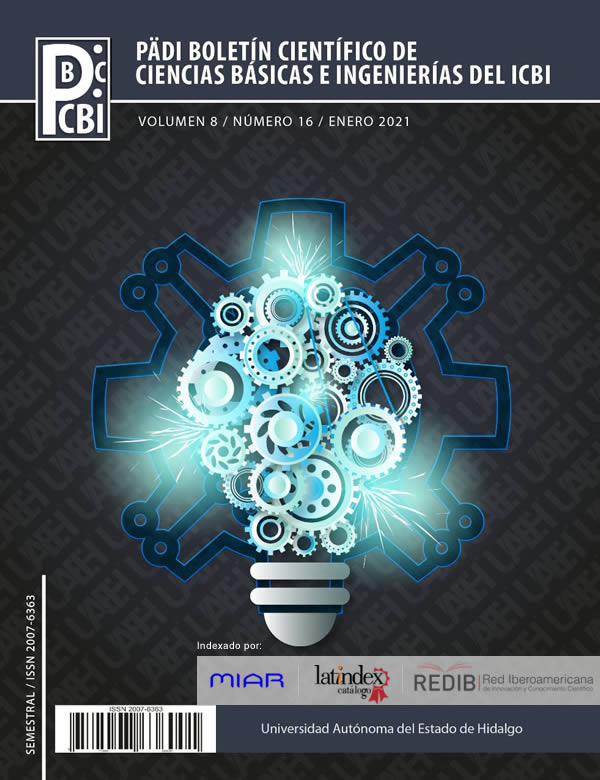Snakes: an unknown field
Abstract
In order to obtain better results in ecological risk assessments and studies of environmental contamination by heavy metals, it is necessary to consider a good complement to the relevant members of the ecosystems studied. Although considerable attention has been devoted to the field of applied ecotoxicology to various vertebrates, including non-bird sauropsids, snakes remain a poorly studied group. These animals are second, third and fourth degree predators, whose ecological role is of utmost importance in the different ecosystems, however, there are still few studies that consider these important members of the fauna. This brief review shows some ecotoxicological evaluations of heavy metals applied to snakes. Most studies focus on the determination of bioaccumulated elements in different tissues of organisms, as well as the assessment of non-lethal sampling methods.
Downloads
References
Burger, J., Campbell, K. R., Campbell, T. S., Shukla, T., Jeitner, C., & Gochfeld, M. (2005). Use of skin and blood as nonlethal indicators of heavy metal contamination in northern water snakes (Nerodia sipedon). Arch Environ Contam Toxicol, 49(2), 232-238. doi: 10.1007/s00244-004-0098-9
Burger, J., Gochfeld, M., Jeitner, C., Zappalorti, R., Pittfield, T., & DeVito, E. (2017). Arsenic, Cadmium, Chromium, Lead, Mercury and Selenium concentrations in Pine Snakes (Pituophis melanoleucus) from the New Jersey pine barrens. Arch Environ Contam Toxicol, 72(4), 586-595. doi: 10.1007/s00244-017-0398-5
Burger, J., Murray, S., Gaines, K. F., Novak, J. M., Punshon, T., Dixon, C., & Gochfeld, M. (2006). Element levels in snakes in South Carolina: differences between a control site and exposed site on the Savannah River site. Environ Monit Assess, 112(1-3), 35-52. doi: 10.1007/s10661-006-0695-3
Campbell, K., & Campbell, T. (2002). A logical starting point for developing priorities for lizard and snake ecotoxicology: A review of available data. Environmental toxicology and chemistry / SETAC, 21, 894-898. doi: 10.1002/etc.5620210502
Campbell, K. R., & Campbell, T. S. (2001). The accumulation and effects of environmental contaminants on snakes: A review. Environ Monit Assess, 70(3), 253-301. doi: 10.1023/A:1010731409732
Campbell, K. R., Campbell, T. S., & Burger, J. (2005). Heavy metal concentrations in northern water snakes (Nerodia sipedon) from East Fork Poplar Creek and the Little River, East Tennessee, USA. Arch Environ Contam Toxicol, 49(2), 239-248. doi: 10.1007/s00244-004-0200-3
Egea-Serrano, A., & Ortiz-Santaliestra, M. E. (2013). Análisis del impacto de la contaminación química sobre la herpetofauna: Nuevos desafíos y aplicaciones prácticas. Boletín de la Asociación Herpetológica Española, 24, No 1, 2-34.
Fernández-Badillo, L., N. Morales Capellán e I. Goyenechea. 2011. Serpientes Venenosas del Estado de Hidalgo. CONACyT UAEH. 112 p. ISBN: 978-607-482-161-1.
Fernández-Badillo, L., Capellán, N. M., Olvera, C. R. O., Canales, G. M., & Mayer-Goyenechea, I. G. (2017). Guía de las serpientes del estado de Hidalgo: Universidad Autónoma del Estado de Hidalgo.
Gavrić, J., Despotović, S., Prokić, M., Gavrilović, B., Radovanović, T., Anđelković, M., . . . Saičić, Z. (2019). Do different diets affect oxidative stress biomarkers and metal bioaccumulation in two snake species? Comparative
Biochemistry and Physiology Part C: Toxicology & Pharmacology, 223, 26-34. doi: https://doi.org/10.1016/j.cbpc.2019.05.010
Hopkins, W. A. (2000). Reptile toxicology: Challenges and opportunities on the last frontier in vertebrate ecotoxicology. Environmental Toxicology and Chemistry, 19(10), 2391-2393. doi: 10.1002/etc.5620191001
Horne, M. T., & Dunson, W. A. (1995). Effects of low pH, metals, and water hardness on larval amphibians. Archives of Environmental Contamination and Toxicology, 29(4), 500-505. doi: 10.1007/BF00208380
Jones, D. E., & Holladay, S. D. (2006). Excretion of three heavy metals in the shed skin of exposed corn snakes (Elaphe guttata). Ecotoxicol Environ Saf, 64(2), 221-225. doi: 10.1016/j.ecoenv.2005.03.018
Quesada, R. J., McCleary, R. J., Heard, D. J., & Lillywhite, H. B. (2014). Non-lethal sampling of liver tissue for toxicologic evaluation of Florida cottonmouths snakes, Agkistrodon piscivorus conanti. Ecotoxicology, 23(1), 33-37. doi: 10.1007/s10646-013-1148-8
Sparling, D.W., Linder, G., Bishop, C.A. & Krest, S. (2010). Ecotoxicology of Amphibians and Reptiles. Second Edition. SETAC Press. Pensacola
Wylie, G. D., Hothem, R. L., Bergen, D. R., Martin, L. L., Taylor, R. J., & Brussee, B. E. (2009). Metals and trace elements in giant garter snakes (Thamnophis gigas) from the Sacramento Valley, California, USA. Arch Environ Contam Toxicol, 56(3), 577-587. doi: 10.1007/s00244-008-9265-8













